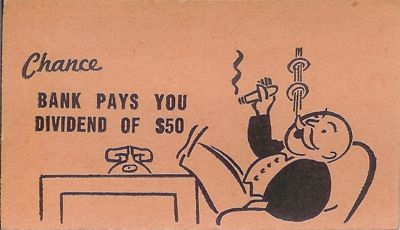Remember at the beginning I mentioned that to get into Do-It-Yourself investing, there would be a little work to do. Well you've opened the self directed account, you've transferred money out of mutual funds to your new account. Now you have all this money to re-invest. What stocks do I pick. Well it is really all up to you and I've provided some of my guidelines to help you select what you would like to invest in. First off, recall that there 3 styles of investing, Growth, Index and Dividend.
Growth Investing involves buying stocks low and selling high. Pretty easy concept, but this involves more work than I can handle, on my end at least. The part that makes it hard work, is that once you do the research, you buy low, then you sell high. You've made a profit but now you need to do more research and wait it out for the correct price to buy low again and then sell high. This style might appeal to others and they can excel at it. Not for me.
Index Investing involves buying index Mutual Funds or index ETFs. Matching the market performance less a small fee. This should beat 50% of regular investors who pick their own stocks. This style might appeal to others and is also easy to follow as every time you hear on the radio on the drive home regarding the TSX's performance that day, you will know exactly what your performance was for that day. This works somewhat for the investor who is in it for the long term. This style would be my style if not for the next method.
Dividend Investing means to pick dividend stocks that will pay you a dividend to hold them. I have also included a DRIP to this method. DRIP means dividend re-investment program. Imagine, receiving shares every time a dividend was paid, then the next dividend payment would be calculated not on your initial amount of shares but the additional shares you got through DRIP are not part of that calculation. This truly is a method to be in "long term".
Here is my simple chart with the big 6 banks as an example.
| Ticker | Price | Dividend | Freq | Yield | 100 | 1 DRIP | Dividend | Investment |
| Shares | Payout | |||||||
| BMO.TO | 76.58 | 0.82 | Q | 4.28% | 82 | 95 | 77.9 | 7275.1 |
| BNS.TO | 60.63 | 0.7 | Q | 4.62% | 70 | 95 | 66.5 | 5759.85 |
| RY.TO | 76.07 | 0.79 | Q | 4.15% | 79 | 100 | 79 | 7607 |
| CM.TO | 99.99 | 1.12 | Q | 4.48% | 112 | 95 | 106.4 | 9499.05 |
| TD.TO | 54.58 | 0.51 | Q | 3.74% | 51 | 115 | 58.65 | 6276.7 |
| NA.TO | 43.23 | 0.52 | Q | 4.81% | 52 | 95 | 49.4 | 4106.85 |
I picked the 6 banks because they are the most easily recognized brand in the Canadian stock market. There will be a local branch in every city in the country. You are probably thinking, this is cool, I can invest in my local branch, somewhat true but overall 1 branch is but a small fraction of the giant monster a bank is. But alas, your small presence at the bank is what they like, they love that $100 monthly contribution into mutual funds. They rely on that totally, imagine doing that with 100,000 customers all over Canada? That $100 doesn't look that small anymore does it. You can then take satisfaction that you are investing in where your money is. A planned blog later will show how to research and find other stocks that interest you. You will say to yourself, "I didn't know I could own a part of that company, I like their product, how is their stock? I would love to be a part of that. "
Onto my simple chart explained (I have a more complex chart planned for later).
Ticker
This is the symbol or ticker that represents the company, you will need this ticker to purchase shares and also to track the price. I am sure that once you buy a stock, you will want to track it. Example BMO.TO is Bank of Montreal.
Price
This is the current price at any given time. BMO is $76.58
Dividend
This indicates the amount of the dividend currently being paid. BMO will pay 0.82 per share
Frequency
This will indicate how often the dividend is paid out. Quarterly and Monthly are options. BMO is quarterly.
Yield
This one is a little important. It tells you how much of a percentage of the stock price is being paid out as a dividend. Higher yield means more money to investors in the dividend and if lower, well less money. The formula is dividend payment times number of times a year divided by the stock price. BMO's yield would be calculated as 0.82 x 4 = 3.28 divided by 76.58 for a yield of 4.28%
100 Shares
Back in the olden days, 100 share lots were the most common number of shares to buy. I put this here to show what 100 shares will pay as a dividend. For BMO, they would pay $82 for a 100 shares. This will tie in nicely with the next column.
1 DRIP
I see that 100 shares will pay me $82 in dividends for BMO. The price is $76.58 meaning I don't need 100 shares to get 1 Dripped Share. The formulas are all copy and paste in excel but this column is where you can customize it to see the absolute minimum amount of shares you need to get 1 Dripped Share. I put in 95 shares and the formulas do all the work. 95 shares will give me a dividend of $77.90 which is above the $76.58 meaning usually a few extra shares just in case the stock price goes up, you want that 1 dripped share.
Investment
95 BMO shares will cost me $7,275.10 as per my formula in excel.
All the above information is available online. Where do I find this Peter? My favourite site for this information has got to be yahoo finance. You put in the ticker, click historical prices, filter and there she goes.
https://ca.finance.yahoo.com/q/hp?s=BMO.TO&a=00&b=12&c=1995&d=10&e=24&f=2015&g=v
Here is what the screen will look like. You can see the increasing dividend payments. That is another criteria I look for. They have to increase their dividend. More on that later.
So this simple chart is what I use to track stock prices and their dividends. I compared the banks, you can also compare telecommunications (BCE, Telus, Rogers), Insurance (Manulife, Sunlife, Great West), Utilities (Enbridge, Fortis, Hydro One), Energy and Gold stocks. You can do anything but remember you need to compare companies in the same industry to see if a stock is cheap enough to buy.
Once I buy a stock, I usually never sell, I like the dividends. And yes the stock price will go up, will go down, I can never predict that and I can confidently say no one else can either. But I know my dividends for the year and when they are paid. In my ideal world, the stock price would never move and I continue to receive the dividends. A yield can be compared to an interest rate. So why on earth would someone go out and buy a GIC for $7,275 and get 1.2% interest. I can go out today and buy Bank of Montreal and get a yield of 4.2%. Yes I know the stock price and change and you will lose money on paper but the 4.2% will not change. Like Warren Buffet says, if you buy a building and rent it out, the rent does not change but the building's value will change. If the building's value drops, I'm not going to sell it because it went down, i'm still going to collect my rent. So that is why investing in high quality stocks with increasing dividends is a must.
As promised, it will take a little work to setup your account and also some work in organizing yourself in picking stocks. This is one of my ways to setup a simple excel spreadsheet to watch stocks I am interested in.
Hopefully you have taken away from this blog entry confidence and new knowledge, making it easier for you to take that first big step into "being in it for the long term"
Any comments, questions, rebuttals, please post as comments to my blog.
Thanks for reading.
Peter







.jpg)


